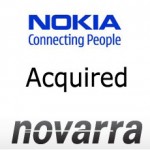 San Francisco — Forget Apple! Despite being barred from Apple’s iPhone and soon-to-be-released iPad, Adobe and Google on Tuesday confirmed rumors that future versions of its Chrome browser will be bundled with Adobe’s Flash Player right out of the gate, eliminating the need for users to separately install and update the popular but often troublesome plug-in.
San Francisco — Forget Apple! Despite being barred from Apple’s iPhone and soon-to-be-released iPad, Adobe and Google on Tuesday confirmed rumors that future versions of its Chrome browser will be bundled with Adobe’s Flash Player right out of the gate, eliminating the need for users to separately install and update the popular but often troublesome plug-in.
The Internet giant wishes the Web to be the foundation for applications, and is presently experimenting with a browser that is bundled with Adobe’s multimedia enabler, which powers most of the video and games on the Web, including YouTube, in a release to developers.
The alliance is part of a larger program that also involves Mozilla — maker of Firefox, the No. 2 browser — to determine the next generation of Web plug-ins, and it is also intended at reducing the security risks of using outdated software, especially, Google informed that it will circulate Flash with Chrome, update it automatically, and eventually put Flash in Chrome’s sandbox where its risks can be contained better.
According to Google spokesperson Linus Upson, the new API “intends to address” the various shortcomings of the current plug-in model.
“Adobe Flash Player is the most extensively used web browser add-on. It supports a broad range of applications and content on the web, from games, to video, to enterprise apps. The traditional browser add-on model has delivered tremendous innovation on the web, but it also presents challenges for both plug-ins and browsers,” Upson wrote in an official blog post.
The incorporation of new Flash Player delivers a taste of what those future features might be. Presently, Google is making available an initial integration of Flash Player with Chrome in the developer channel. Downloading new versions of the plug-in will install seamlessly through the auto-update system and Chrome will include the most recent version of Flash content in the future.
Google’s Chromium blog claims that the integration will have the following benefits:
“The browser plug-in component is loosely specified, limited in capability and varies across browsers and operating systems. This can lead to incompatibilities, reduction in performance and some security headaches. So, today we are offering an initial integration of Flash Player with Chrome in the developer channel. We plan to bring this functionality to all Chrome users as quickly as we can.”
This robust integration do seem to deliver real benefits, and it will improve on security and stability by users always having the latest Flash version installed. Then again, the integration could potentially leave many Chrome users with an insecure version of Flash for some time if Adobe drags its feet patching a known vulnerability. You can easily disable the built-in Flash Player if you like, though.
Upson mentioned that improving the conventional browser plug-in model will make it possible for plug-ins to be just as fast, stable and secure as the browser’s HTML and JavaScript engines.
“Over time this will enable HTML, Flash, and other plug-ins to be used together more seamlessly in rendering and scripting,” he said.
Paul Betlem, Adobe’s senior director for Flash Player engineering, was reading from the same script. “Our hope is that the robust integration between Chrome and Flash Player will serve as a showcase for more consistent, seamless, and efficient Web browsing experiences,” he said in an Adobe blog post.
Users can check-out the developer version of Google Chrome that contains the built-in Flash player by downloading the “channel switcher” to switch your copy of Chrome to the Dev channel. Go to this Google page to find out how.
View Slideshow here. (Credit: PCMAG.com)


